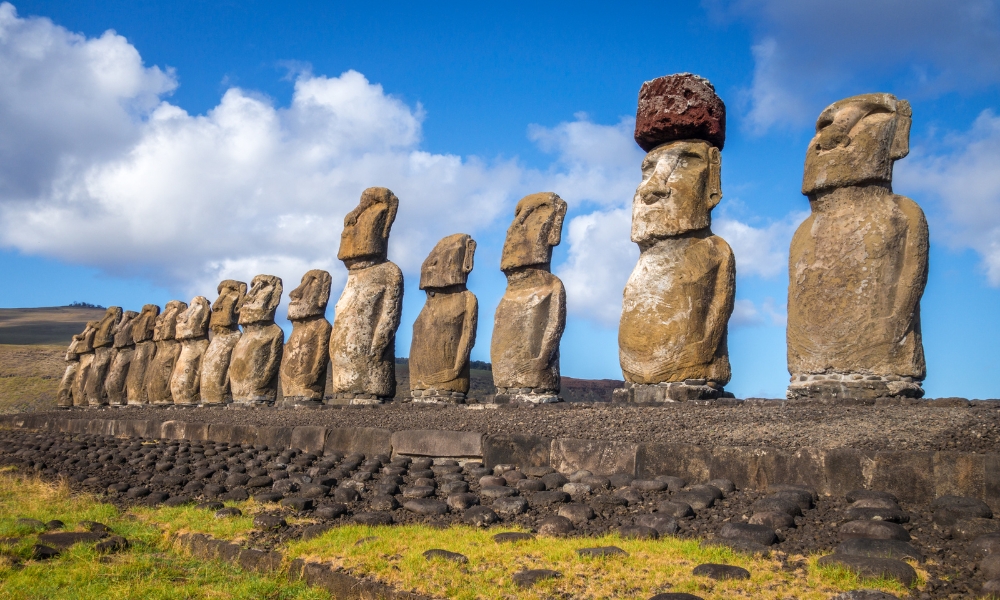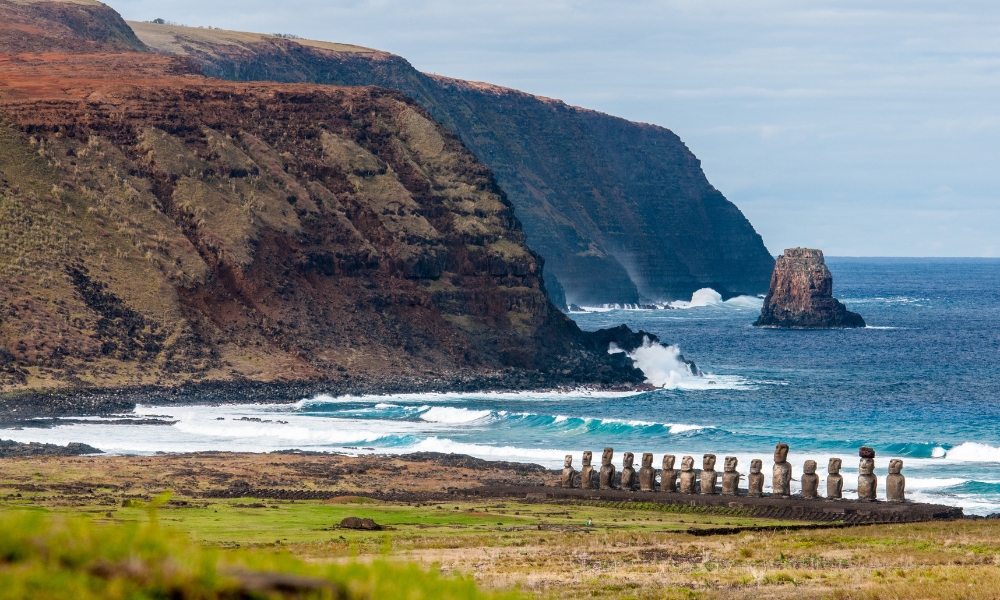What’s Endangering Easter Island’s Moai Statues?

What’s Endangering Easter Island’s Moai Statues?
Easter Island’s Moai Statues
When you get to Easter Island, also known as Rapa Nui, it feels like time has stopped. It’s not just the distance or the deep blue horizon that surrounds you. The moai, those tall stone statues that rise out of the ground, have a quiet power. Each one seems to say, “Remember.”
The moai were carved hundreds of years ago to honor ancestors, but they are more than just old stones. They are memories set in stone, protectors of a culture that still lives and breathes in the people of Rapa Nui. But now, these guardians of identity are up against something they were never meant to handle.
Climate Change Is Redrawing the Map
The coast of Easter Island is changing quickly. The moai are standing on ground that is being eaten away by rising seas, strong storms, and more erosion. In 2022, waves crashed into the ceremonial site of Ahu Tahai, knocking over sacred platforms and damaging statues. The predictions also don’t look good.
These monuments felt like they would never move. But now, even the strongest stone looks weak. And with each storm surge, the risk grows—not just for the moai, but for the stories they were built to protect.
A Local Battle
The Rapa Nui people aren’t waiting for someone else to fix it, which is what makes this place special. They’ve done more. Community leaders, artisans, and conservationists are strengthening the coast, rebuilding platforms, and digitizing each statue to protect its likeness.
You don’t just visit; you become part of this effort. You can help keep this heritage alive by going on tours led by Rapa Nui people, staying in locally owned lodges, and getting involved in cultural activities.
It’s not about keeping ruins safe. It’s about keeping a culture alive.

Rapa Nui’s Culture
More Than a Destination
Easter Island is not a museum. It isn’t stuck in time. It’s a place where kids learn old songs, master carvers pass down old skills, and elders still meet to tell stories that have been carved into stone.
Don’t just go to the famous places on the island if you want to really get to know it. Talk to the people. Attend a workshop. Take your time, pay attention, and let the island’s rhythm lead you. You’ll get more than just pictures; you’ll also learn more about resilience, heritage, and connection.
So, Are the Moai at Risk?
Yes. And the threats are real. But this isn’t a story about loss that has to happen. It’s a call to be aware. To travel with purpose. To help places that are trying to protect what matters most.
Easter Island is still talking. Not just through stone, but also through the voices of people who won’t let the waves wash away their story. The moai were made to last forever. Part of the answer depends on how you choose to see them and how you choose to show up.

